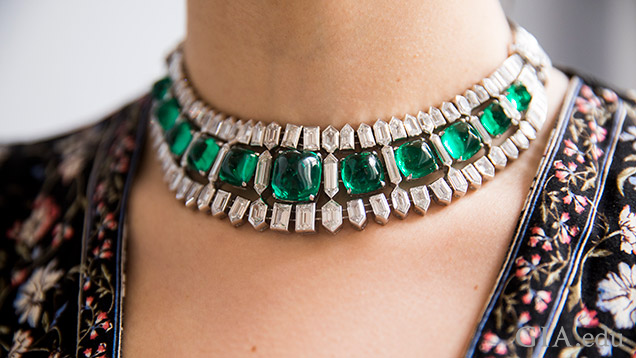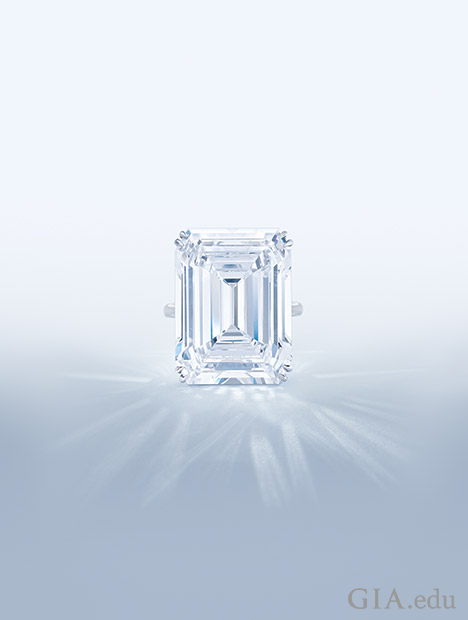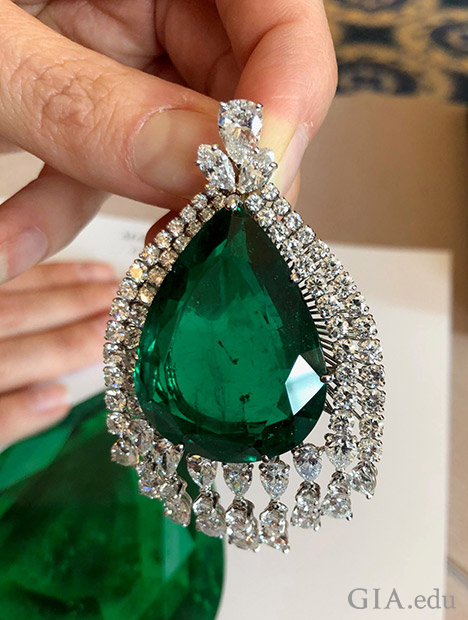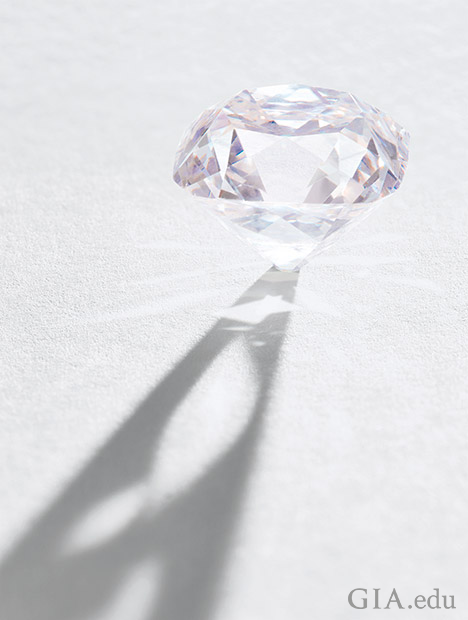Spring 2019 Auctions: Premium Prices for Historic Pieces
June 14, 2019

While the major auction houses are still making news with their rare gemstone offerings, the news about recent sales is focused more on history than record prices.
This year’s auctions have seen fewer lots, fewer very large diamonds and an easing of prices from the record levels seen a few years ago. But auction executives are quick to point out that the market for high quality gems and jewels is still robust – for pieces with a historic past.
“Our April New York auction represents the market, right now,” said Rahul Kadakia, Christie’s International Head of Jewellery. The April 16 sale did not have any top fancy colored diamonds over 5 carats or D flawless diamonds larger than 25 carats, as had been the case in recent years. In addition, a high percentage of lots came from estates, not dealers.
Several 15 ct-plus diamonds achieved per carat prices of more than $100,000 at the sale, which he acknowledged was down from the peaks of $150,000 to $180,000 in mid-decade.
“That was a spike in the market,” he explained. “But if you look at the long run, prices have risen substantially for such stones over the years.”
Sotheby’s May 14 Geneva sale saw one large D fl (36.57 ct) diamond sell for about $5 million ($136,000 per carat), but most of the action was for signed period jewels, such as The Beaumont Necklace, a circa 1935 Art Deco emerald and diamond creation, presumably made by Van Cleef & Arpels for collector Hélène Beaumont, that sold for $3.6 million, about 20% above its estimate.
Tailoring Auction Items to Market Demand
When the market weakens for major gemstones, the auction houses have to become more careful about curating their sales – smaller high-quality stones, more classic “signed” period jewels – and concentrate more on estate pieces. Prices are usually less aggressive than those from dealers, Kadakia said.
Dealers who sell at auction said they need high prices to recoup the auction seller premiums of 12% to 15% on sales. (Note that auctions also charge buyers a similar rate. Thus, if a gemstone has a hammer price of $100,000, the buyer will likely pay $115,000 and the seller will receive about $85,000.)
Sotheby’s and Christie’s have reduced the number of lots in their major jewelry sales by 25% to 35% in the past two years because, even though these houses almost never own pieces they sell, they go all out to avoid “buy-ins” – lots that fail to find bidders.
“The auctions’ publicity power works against them if this happens,” explained one major dealer of fancy colored diamonds. “If pieces don’t sell, everybody knows it right away and they start to worry about the market.”

Kadakia said prices for major colored stones seem less affected by the slowdown; top sales lots are usually fancy colored diamonds. The top lot of Christie’s May 15 Geneva sale was a 22.86 ct cushion shaped Burmese ruby that sold for $7.2 million, more than twice its pre-sale estimate, and a natural pearl sautoir (a long necklace that can suspend a pendant or tassel) that brought $5.8 million from a dealer.
The May 15 sale did feature two significant diamonds:
- An 118 ct GIA-graded Fancy yellow diamond purchased for $7.1 million (twice the estimate) by Siba Corp., a New York-based dealer of major gemstones, in honor of its founder Sam Abram who had passed away shortly before the sale
- The Jonker V, a 25.27 ct GIA-graded D VS1 diamond cut in 1934 from the famed 726 ct Jonker Diamond, found in South Africa, which achieved its estimate of $3 million
One-of-a-Kind Pieces and Prices
But even when prices in general are softening, truly one-of-a-kind pieces will always command top-dollar because buyers know they will not likely see them again.
“A perfect case in point was the Wittelsbach blue diamond,” Kadakia said. “We sold that for a record $23.4 million in 2009 when the financial markets had crashed.”

The most publicized lot of Christie’s May 15 auction was surely one-of-a-kind: The Imperial Emerald of Grand Duchess Vladimir of Russia, which originally belonged to empress Catherine the Great.
The emerald’s rich history started when it was acquired as a 107.67 ct square cut by Catherine the Great toward the end of the 18th century. It passed through Russian royalty after her death until Cartier purchased it in 1927. Cartier had the emerald recut into a pear shape of 75.63 cts to eliminate most of the fissures and inclusions and then sold it to John D. Rockefeller Jr. in 1954.
Valuing the gem was difficult because of its provenance, Kadakia said.
“We met with the trade, as we often do, and they asked us to list it without adding its history to the price.”
Christie’s experts listed the pre-sale estimate of $2.3 million to $3.5 million in the catalog.
“If we’d gotten that, then it we could say we achieved the value of the emerald itself. Anything higher would be the add-on for its history,” Kakadia noted.
When the bidding ended, an anonymous private buyer paid $4.3 million for the emerald, adding about $1 million for the history.

Two years ago, Christie’s added $1 million to the $4 million pre-sale estimate of the 19 ct Fancy Light pink Le Grand Mazarin diamond presented to French King Louis XIV in 1661 by Cardinal Mazarin. It was then passed through a succession of French monarchs and, later, emperor Napoleon Bonaparte.
In Kadakia’s words at the time “it was the diamond with the most prestigious and historic provenance still in private hands.” The diamond, which was offered at a November 2017 sale, had been sold in 1887 at the auction of the French crown jewels and was sold through private collections until resurfacing for this auction.
“In the end, the stone sold for almost $15 million – an $11 million premium because of its history,” he said.
Russell Shor is senior industry analyst at GIA in Carlsbad.



